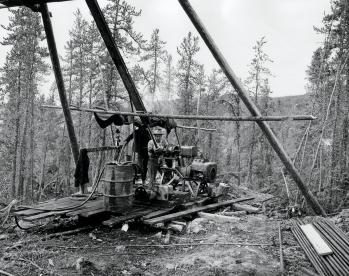
Diamonds are a crystalline form of carbon. They are the hardest known minerals and have several uses once they are mined. Diamonds are formed in volcanic rocks called kimberlites and lamproites, located as far as 150 to 200 km below the earth's surface. There are various techniques used to extract the diamonds from the kimberlites or lamproites, such as crushing, blending with water and passing over grease, or passing the crushed mixture through an x-ray sorter. Diamonds can be used as gems, or for various industrial purposes such as drilling bits or surgical equipment. In 2004, there were no operating diamond mines in Saskatchewan. There are, however, several sites that have been set up to test the ground for prospective development. Areas of interest for exploration in the province include the Choiceland, Fort à la Corne, Pasquia Hills, Molanosa Arch, Candle Lake, Sturgeon Lake, Smoothstone Lake and Wapawekka Lake areas. The first discovery of kimberlite in Saskatchewan was made in 1988 in the Sturgeon Lake area. Several micro-diamonds (less than 0.5 mm) have been found in the province since then; larger diamonds (macro-diamonds) have also been found during some exploratory drilling, but there have been no signs of large stones or sites. The most promising site would appear to be Fort à la Corne, located approximately 65 km west of Prince Albert. Kimberlites were first discovered there in 1989, and the area is now known to be the largest diamond deposit in the world. To date, the largest diamond to come out of the Fort à la Corne area weighs 10.23 carats. Entities that have invested in this collaborative effort of exploration include Cameco Corporation, De Beers Canada Exploration Inc., Kensington Resources Ltd., and UEM Inc.
Julie L. Parchewski